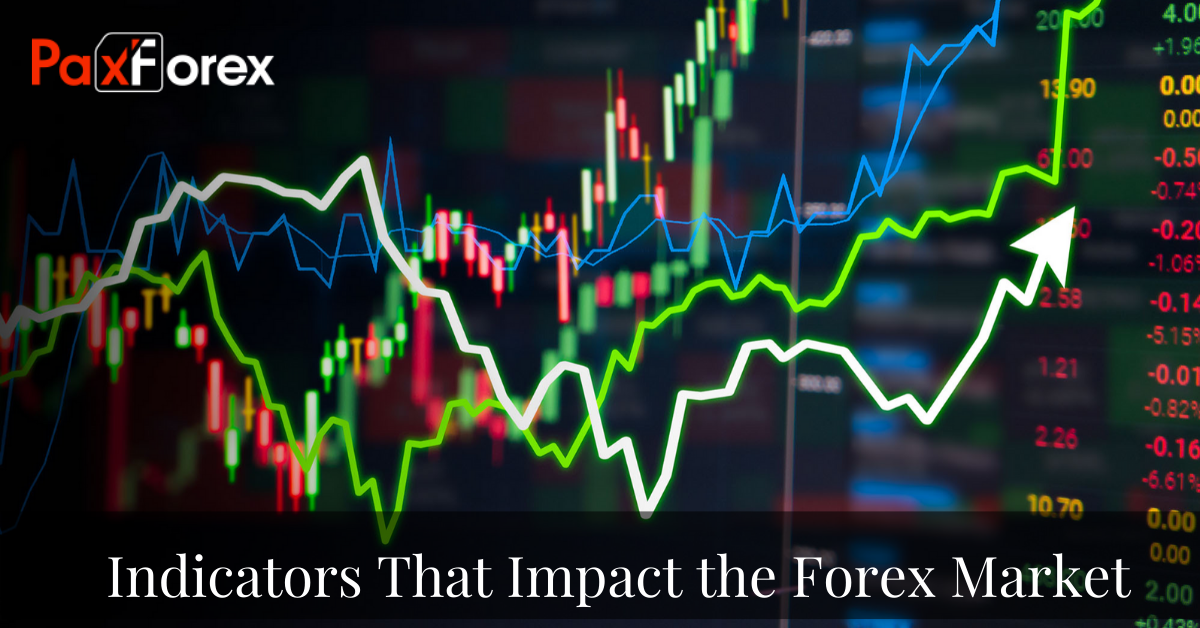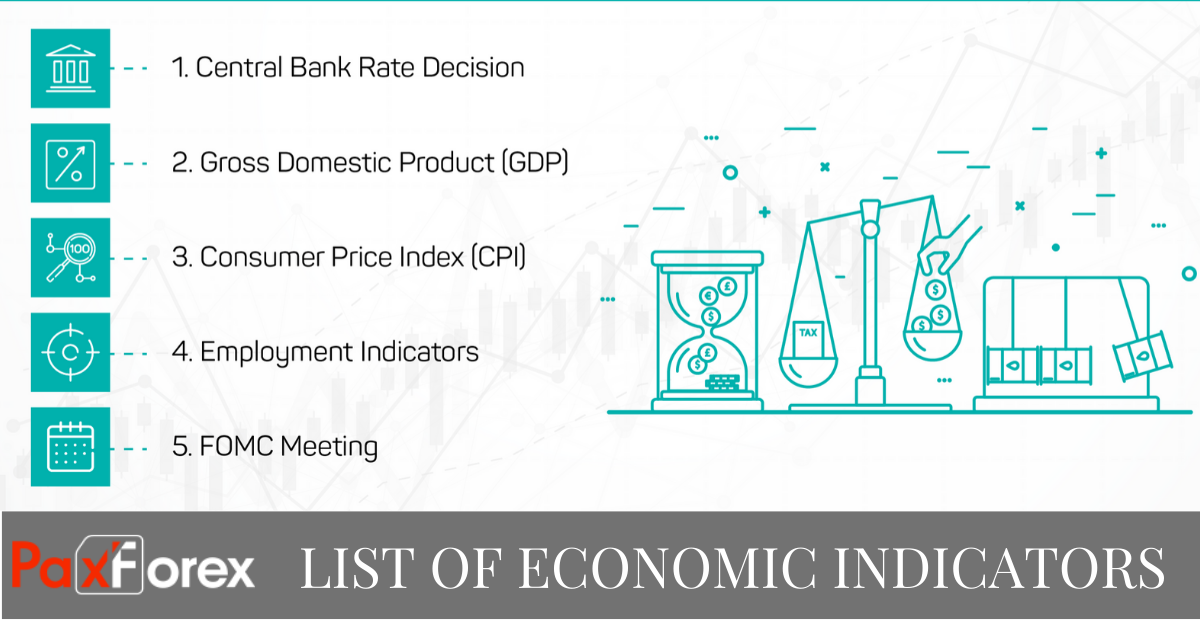
Economic indicators are macroeconomic indicators that are published in the form of government or independent reports and reflect the state of the national economy. They are published at certain times and provide the market with information about whether the economy has improved or worsened. The impact of Forex leading indicators, for example, on the global currency market can be compared to the impact of corporate income reports on the securities market. Any deviation from the norm can provoke significant price and volume fluctuations.
Some reports, such as unemployment data, may be known to you due to their wide resonance. Others, such as the start of housing construction, are not as popular. However, each indicator serves a specific purpose and is useful in its way.
There are also various economic indices, usually calculated by independent organizations and institutions, for example, indices of production activity, indices of business confidence, various indices of economic expectations, etc. Generally, economic indicators show changes in aggregate economic activity.

1. Gross Domestic Product (GDP)
GDP is the most extensive economic indicator. It gives information about the real performance of the economy. It includes the value of all the finished goods and services within the country made within a specific period. It is released by the government agency of the country. GDP of a country decides the status of the country; therefore, it affects the investors and Forex traders’ sentiment.
2. Non-farm Payrolls (NFP)
It is an economic indicator that measures the monthly number of new jobs created in the non-agricultural sectors of the US economy. It is a very significant macroeconomic indicator of the country, which best reflects the dynamics of unemployment in the USA. It is often said that it "moves the markets".
A strong movement after the release of changes in the number of NFP is primarily because this indicator is almost impossible to predict, as it is always unexpected and the indicators differ greatly from previous values.
The report of Non-Farm Payrolls economic indicator also includes information on the average duration of the working week, average weekly wages and average hourly wages, the growth of these indicators contributes to the strengthening of the dollar.
3. Unemployment Rate
It shows the percentage ratio of the unemployed to the total working population. It comes out simultaneously with the indicator of Non-Farm payrolls. It has a vital influence on the market. Usually, the analysis of the unemployment rate is carried out in the context with the figures reflecting the Non-Farm Payrolls reports. For example, an increase in the value of NFP when the unemployment rate rises indicate an increase in unemployment in agricultural sectors, etc. In anticipation of an increase in basic interest rates, a decrease in its value leads to an increase in the dollar. It is usually published on the first Friday of each month at 8:30 EST New York simultaneously with NFP.
4. Federal Funds Rate
Federal Funds Rate or Federal Open Market Committee (FOMC) is not a direct economic indicator. FOMC is in charge of US monetary policy and it influences the Fed rates. The Fed rate affects the values of the dollar. As the dollar is associated with many countries with import and export it affects all the traders in investing in currencies.
5. Consumer Price Index (CPI)
Consumer price index (CPI) is the main indicator of inflation, so very often CPI is called inflation index. It reflects the dynamics of changes in retail prices for the market basket of consumer goods and services purchased by citizens, determined by the government.
The Consumer Price Index is an important economic indicator because it reflects inflation for consumers, which makes it so significant. For central banks, it becomes a significant factor in interest rate decision making. From this point of view, the analysis of inflation reports allows the trader to assess the possibility of increasing or decreasing the interest rate by the central bank, based on which to predict the strengthening or weakening of the respective currency.
6. Industrial Production Index
The IPI is a monthly economic indicator that calculates actual output in the manufacturing, mining, gas industry and electric industry relative to a base year. This indicator shows the strength of the performance of industries of a country and therefore it decided the investment sentiment of Forex traders.
7. Capacity Utilisation
Capacity utilization indicator is a macroeconomic indicator of the United States, which reflects the degree of capacity utilization of the country's production facilities, which is reflected in the ratio of total industrial output and total productivity of all industries.
The overall market impact of the macroeconomic indicator "Capacity utilization" is not large. Its main objective is to show how well the country's economic growth and inflationary processes are balanced.
The level of 85% of the Capacity utilization indicator shows an acceptable balance, while its excess indicates the development of inflationary processes in the economy, and therefore stimulates the growth of the US dollar.
8. Retail Sales
Retail Sales is a measure of sales in the United States of America, reflecting changes in Retail Sales volume. It is a measure of consumer spending and demand, that is, inflation. It is released by the department of commerce
9. Durable Goods Orders
Businessmen and consumers order durable goods when they believe that the economy is good and it is improving. A durable goods release is a significant economic report that shows that the economy is trending upward.
10. Initial Jobless Claims
The Initial Jobless Claims determine the number of people who have applied for the unemployment allowance for the first time in the past week. This data is collected by the Ministry of Labor and published in a weekly report.
The number of jobless claims is used to measure the state of the labor market, as an increase means that fewer people are employed.
The weekly data is quite volatile.
Generally, a change of at least 35,000 signals a significant change in the number of jobs.
A higher than expected reading is seen as negative/ bearish for the USD, while a lower than expected reading is seen as positive/ bullish for the USD.
More economic indicators affect the Forex market but above 10 are the most important ones. Every trader should look for these indicators before making any trading judgment. Apart from these, there are also Forex indicators which are mostly technical indicators that show the complex information in chart form.
Economic indicators are key statistics that show the direction of the economy. Important economic events manage the movement of Forex prices, so it is important to familiarize yourself with global economic events to conduct proper fundamental analysis, which will allow traders to make informed trading decisions.
The interpretation and analysis of indicators are important to all investors as they reflect the general state of the economy, predict its stability and allow investors to respond promptly to sudden or unpredictable events, also known as economic shocks. They can also be called the "secret weapon" of traders, as they show what will happen next, what can be expected from the economy and in what direction the markets can move.
We are one of the fastest growing Forex Brokers in the Market. Trade with PaxForex to get the full Forex Trading experience which is based on...
- The Reliability on all Assets in the Market
- Trusted Worldwide for over a Decade
- Live Multi-Lingual Online Support 24/5









